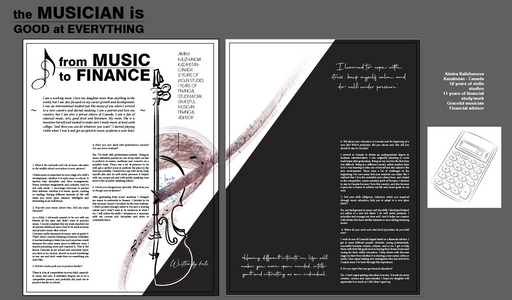GDC Part 2, Week 3: Musician's BRAIN
- Kali
- Jan 28, 2021
- 3 min read
The musician is a financier. How versatile people are!
People can express emotions, talk, inspire, evoke sympathy, trust and compassion through the sounds we make, but the music itself invariably makes us experience different states - from calmness or immersion in deep sadness to stimulating incredible activity and the birth of genuine joy. And perhaps this reason, music is one of the most instinctive and communicative arts.
A study by Finnish scientists has shown that regular playing any musical instrument can “change” the circuitry of our brain and even improve its overall performance. Long periods of musical practice increase the size of the brain centers responsible for hearing and physical dexterity. Finnish scientists, led by Iballa Burunat (Iballa Burunat) decided to double-check the old data and find out if this circumstance improves the connection between the cerebral hemispheres.
Two groups were formed for the study. The first included professional musicians (keyboardists, cellists, violinists playing the bassoon and trombone), and the second included people who had never played musical instruments professionally.
To figure out how listening to music - not just playing it - affects the hemispheres of the brain, scientists used MRI scanners. The researchers recorded each participant's brain response to music and compared the activity of left and right hemispheres using software. As it turned out, the part of the corpus callous that connects the two hemispheres is actually larger in musicians. The researchers also found that the activity of the left and right hemispheres was much more symmetrical in the brains of musicians than in non-musicians. playing a musical instrument for a long time directly affects the development of the brain and the fruits of this influence turn out to be constant and independent of the playing situation itself.

To connect 2 absolutely difference spheres of activity, I wanted to touch more on the musical theme. The idea to combine notes and letters came up immediately, since I already had similar experience with a portfolio. Each note has its own letter name. A phrase was created and the notes below it. As a standalone illustration, it looked very good. But in general, with the interview, everything was lost.

Attempt 1, 2, 3:
Then I needed to think of other options for displaying musical signs and terms. Your attention is the shape of a violin (the main instrument of our heroine), a treble clef and notes.
I also wanted to explore more lines and shapes, words that can be reliable to the topic. This kind of an attempts to create a logo.

Fourth attempt to make layout for the article. Combine the shape of a violin, the wind that begins with notes and was supposed to turn into mathematical formulas. I was not very happy with the color and presentation of the style.
I changed a lot after consultation with a lecturer who guided me in the right direction. The color scheme and illustrations were changed. The quotes of our main character and the main logo were added. Also I plan to add and draw shapes of calculator to show that 2 sides of Aimira's Life.
The result is not final and I want to make the work as good as possible!
References :
Hamzelou J. (2015). Musicians' brains fire symmetrically when they listen to music.
https://www.newscientist.com/article/dn28266-musicians-brains-fire-symmetrically-when-they-listen-to-music/
Burunat I. (2018). On application of Kernel PCA for Generating Stimulus Features for fMRI during Continuous Music Listening.
https://www.researchgate.net/profile/Iballa_Burunat
























Comments